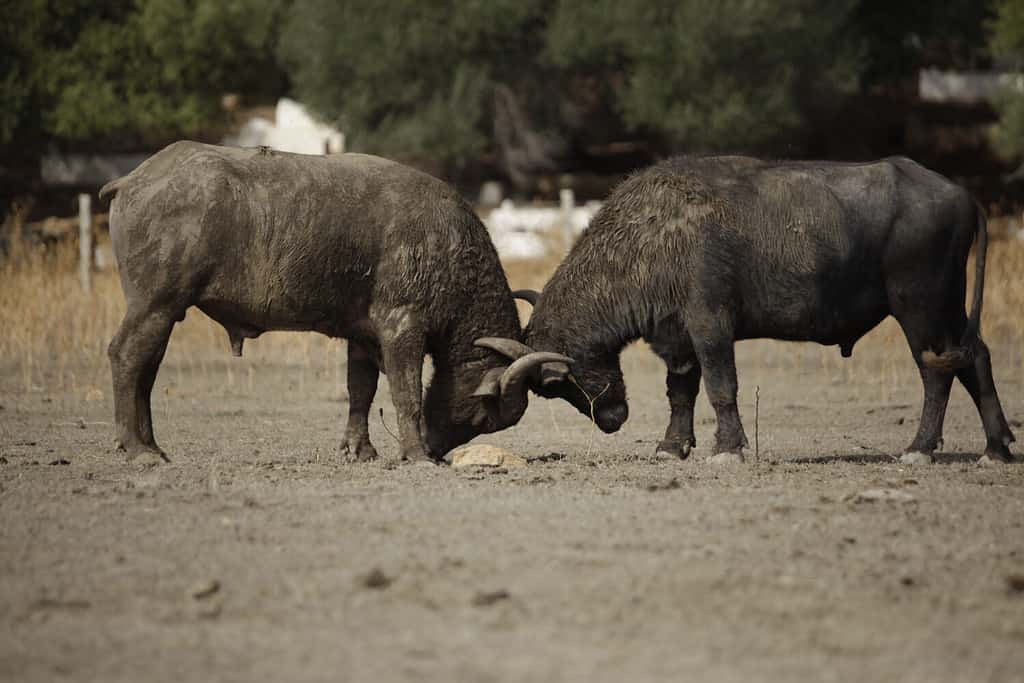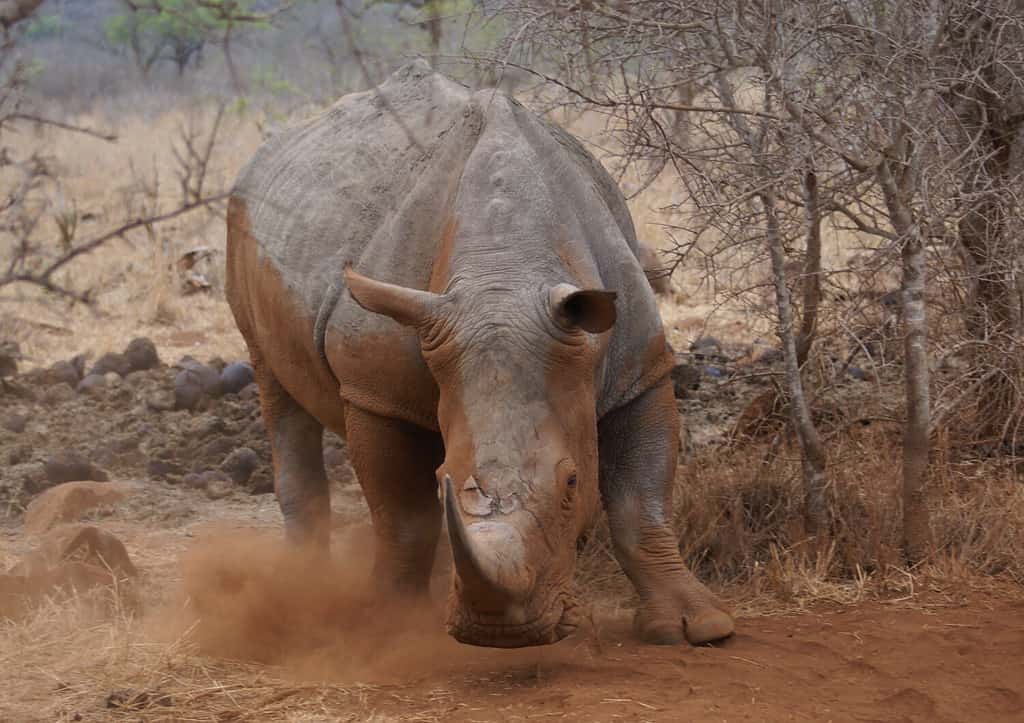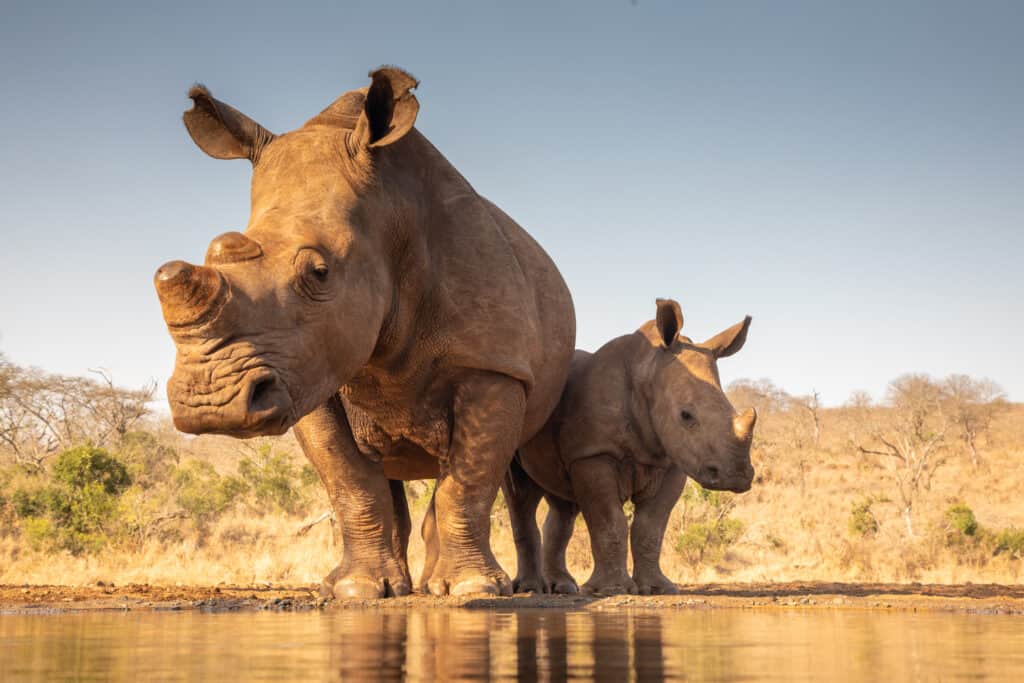Continue reading for our analysis...

“Pick on someone your size” is a saying that couldn’t be held more true than in this new video that we scoured the internet for. Here we see an incredibly angry rhinoceros that takes on a buffalo in a fight.
Now you might be wondering why we would share the adage “pick on someone your size” about the rhino and a buffalo. The answer to this has to this can be found in looking at their physique and how it differs from each other.
Let’s take a look at the rhino and buffalo sizes before we delve into what happens in the video.
How Big is the Buffalo (Syncerus caffer)?
The buffalo of the family Bovidae weighs anywhere from 600-907 kilograms (1,323-2,000 pounds). Length-wise, they are 67-71 inches (5.6-6 feet).

Buffalos are herbivores.
©Agarianna76/Shutterstock.com
They have large curved horns on top of their head that are used as a defense mechanism while fighting. Buffalo can also run up to 22 miles per hour, making their impact that much more severe when they hit.
Just when we think these beasts might top it all, we now move to the rhino.
How Big is the Rhinoceros (Rhinocerotidae)?

Rhinos are herbivores.
©michel85/Shutterstock.com
The rhino of the family Rhinocerotidae weighs anywhere from 800-3,500 kilograms (1,765-7,716 pounds). Length-wise, they can be anywhere from 7.10-10.6 feet long.
Unlike the buffalo, the rhino only has one horn. However, this horn is a definite defining factor for the rhino. The largest horn ever recorded was 51 inches long. Rhinos beat the buffalo in speed by running up to 30 miles per hour.
The video below in the Kariega Game Reserve in South Africa starts with a small buffalo herd in an open field. They are likely grazing before being met with this angry rhino. Who, for some reason, was not happy to see these buffalo there.
Immediately, the rhino rushes in and starts to pick a fight with one of the buffalo. As any animal in the wild would do, the buffalo starts to fight back. Only, this animal is nowhere near his size and is quite literally beating him up easily.
At one point, these two animals go head to head, as this is their strongest point when fighting another animal. When the rhino puts his head under the buffalo and flips him up into the air so high the buffalo, the 2,000-pound buffalo is thrown around like a rag doll and flips over.
Is It Normal for Rhinoceroses to Defend Themselves?

A mother will fiercely defend her young.
©iStock.com/PeterVanDam
Rhinoceroses are large, imposing animals that can be found in different habitats across the world. They are well-known for their impressive horns, thick skin, and strength. But rhinos also have a number of defense mechanisms that they use to protect themselves from predators.
Rhinoceroses have an incredible sense of smell and great hearing, making them highly alert to potential threats. They also have a powerful charge that can be used to ward off enemies, and they are incredibly agile despite their size.
In addition, rhinos have a tendency to fight with other animals when threatened. This behavior is quite normal, and rhinos are known to be aggressive when they feel threatened. They use their horns to defend themselves from predators and other animals they perceive as a threat.
Finally, rhinos have a thick hide that helps to protect them from any potential predators. This tough skin is designed to protect them from sharp claws and teeth, and it can help to prevent serious injury.
Thank you for reading! Have some feedback for us? Contact the AZ Animals editorial team.







